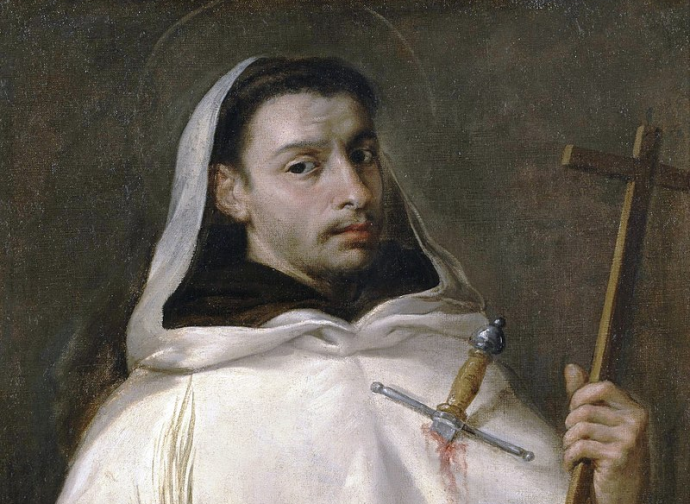Saint Angelo of Sicily
Saint Angelo of Sicily (c. 1185-1220), also known as “of Jerusalem” because of his birthplace, was born in the Holy City from Jews converted to Christianity. After the death of his parents, he and his twin brother John entered the monastery of Mount Carmel, whose spirituality was inspired from the beginning by the example of the Blessed Virgin and the prophet Elijah.

Saint Angelo of Sicily (c. 1185-1220), also known as “of Jerusalem” because of his birthplace, was born in the Holy City from Jews converted to Christianity. After the death of his parents, he and his twin brother John entered the monastery of Mount Carmel, whose spirituality was inspired from the beginning by the example of the Blessed Virgin and the prophet Elijah.
In 1205 Saint Albert (1149-1214) was appointed Patriarch of Jerusalem. The Carmelites asked him to write a rule of life for their community, which became known as the Rule of St. Albert, containing indications for fasting, working in silence, prayer, and was full of beautiful exhortations: “Your loins must be chastised with chastity, your chest fortified by holy meditation because, as Scripture says, holy meditation will save you. Wear holiness as a breastplate and it will allow you to love the Lord your God with all your heart, soul and strength, and your neighbour as yourself. Faith must be your shield on all occasions”.
Around 1218 Angelo was commissioned to go to Rome to explain the Rule to Pope Honorius III, who approved it eight years later. It was a fundamental step in the history of the Order of the Blessed Virgin of Mount Carmel. It was a period of great religious ferment, as evidenced by the fact that the Pope himself had already approved the rules of the Dominicans (1216) and the Franciscans (1223). But it was also a time when the Church was facing the Cathar heresy. And Angelo, who in his brief stay in Rome had made himself known as a brilliant preacher, was sent to Sicily to oppose the heretics. The most widespread hagiography reports of thousands of people present at his sermons and attributes to him several miracles performed on the island, such as the healing of seven lepers (indicated by name and place of origin).
The last stop on his journey was Licata. Here he tried to convert a squire named Berengarius, who was causing a scandal because of his relationship with his sister, from whom he had had three children. Angelo succeeded in converting the woman, convincing her to end the incestuous relationship. But her brother didn't take it well. While the Carmelite priest preached in the church dedicated to Saints Philip and James, Berengarius attacked him, wounding him severely with five blows of the sword. The saint was taken by the faithful to a nearby house, where he died on 5 May 1220 after four days of mortal agony, invoking forgiveness for his executioner. His tomb, placed in the church where the assault had taken place (today the Sanctuary of Saint Angelo), immediately became a place of pilgrimage.




